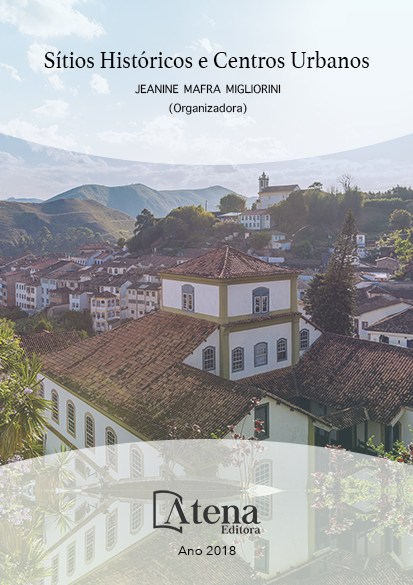
O IMPACTO DAS INUNDAÇÕES SOBRE ALVENARIAS HISTÓRICAS EM TIJOLO CERÂMICO: A destruição gradativa do Sítio histórico de Santa Leopoldina [ES
Este artigo discute os impactos
de eventos meteorológicos extremos,
especialmente precipitações elevadas e
inundações sobre sítios históricos situados
em margens de rios, no que se refere à
conservação das alvenarias históricas. No
Brasil os principais eventos classificados
como desastres naturais se relacionam à
dinâmica externa da Terra, como inundações
e enchentes, escorregamentos de solos e/ou
rochas e tempestades, resultando em grandes
perdas, inclusive para o patrimônio cultural. Em
particular, esta discussão aborda a degradação
causada pelas inundações do Rio Santa Maria
da Vitória sobre as edificações do Sítio histórico
de Santa Leopoldina, fundado em 1860, no
estado do Espírito Santo e protegido pelo
Conselho Estadual de Cultura. Considerando a
escala do edifício, este trabalho analisa os tijolos
cerâmicos utilizados no sistema construtivo
das edificações históricas, identificando as
características físicas (tamanho, textura,
aspecto, massa específica, absorção total em
água e resistência mecânica) e analisando
as manifestações patológicas decorrentes da
imersão e saturação em água, bem como os
danos resultantes das ações emergenciais.
Verifica-se que a acelerada degradação não
se encerra no fim das inundações, pois as
manifestações patológicas oriundas da água
continuam ocorrendo mesmo após a secagem
e, muitas medidas emergenciais adotadas
reduzem significativamente a vida útil do
bem cultural enquanto testemunho artístico
e histórico. Pois, ainda que permaneça a
materialidade do bem a curto prazo, a médio
e longo prazo as manifestações patológicas
decorrentes da imersão em água e da limpeza
implicam na destruição gradativa das alvenarias
e, portanto, do patrimônio edificado.
O IMPACTO DAS INUNDAÇÕES SOBRE ALVENARIAS HISTÓRICAS EM TIJOLO CERÂMICO: A destruição gradativa do Sítio histórico de Santa Leopoldina [ES
-
DOI: Atena
-
Palavras-chave: Sítio histórico; Inundação; Alvenarias históricas.
-
Keywords: Historical site; Flooding; Historical masonry.
-
Abstract:
This paper discusses the
impacts of extreme weather events, especially
high precipitation and flooding, on historical
sites located on riverbanks, regarding the
conservation of historic masonry. In Brazil the
main events classified as natural disasters relate
to the external dynamics of the Earth, such as
floods, landslides and storms, resulting in large losses, including for cultural heritage.
In particular, this discussion addresses the degradation caused by the floods of the
Santa Maria da Vitoria River on the historical site of Santa Leopoldina, founded in 1860
in the state of Espírito Santo and protected by the State Council of Culture. This paper
analyzes the ceramic bricks used in the construction of historic buildings, identifying
the physical characteristics (size, texture, appearance, specific mass, total water
absorption and mechanical strength) and analyzing the pathological manifestations
resulting from immersion and saturation in water, as well as damages resulting from
emergency actions. It is found that the accelerated degradation does not end with the
flooding, as the pathological manifestations continue to occur even after drying, and
many adopted emergency measures significantly reduce the lifespan of the cultural
asset as an artistic and historical testimony. Even if the materiality of the good remains
in the short term, in the medium and long term the pathological manifestations resulting
from immersion in water and cleaning lead to the gradual destruction of the masonry
and, therefore, of the built heritage.
-
Número de páginas: 15
- Luciana da Silva Florenzano
- Renata Hermanny de Almeida
- Luciana Florenzano


